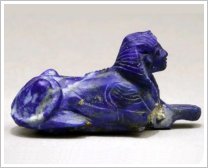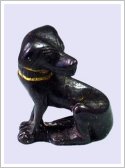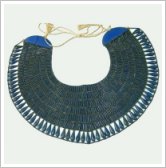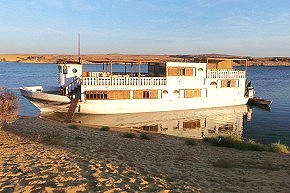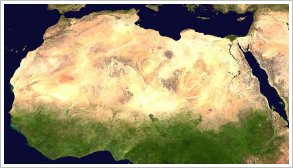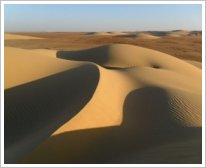We Provide
- Building Land
- Gabawi *1712 (350 sqm)
- Gorf *2105 (525 sqm)
- Gorf *2206 (700 sqm)
- Aqalta *2207 (1,050 sqm)
- House Building Service
- Architecture
- Real Estates
- Villa Hana, Ramla
- Shell Apartment Papyrus, Habu
- Apartment Hatshepsut 2, Gezira
- Apartment Hatshepsut 3, Gezira
- Apartment Hatshepsut 4, Gezira
- Holiday Flats
- Hatshepsut 1 (1 BR), Gezira
- Hatshepsut 2 (1 BR), Gezira
- Nile View (1 BR), Ramla
- Hatshepsut 3 (2 BR), Gezira
- Hatshepsut 4 (2 BR), Gezira
- Hatshepsut 5 (2 BR), Gezira
- Hatshepsut 7 (2 BR), Gezira
- Hatshepsut 9 (2 BR), Gezira
We Organise
We Report
- Sorry, no more news!
- News 2014 (26)
- News 2013 (76)
- News 2012 (92)
- News 2011 (125)
- December 2011 (18)
- November 2011 (10)
- October 2011 (10)
- September 2011 (6)
- August 2011 (5)
- July 2011 (5)
- June 2011 (19)
- May 2011 (15)
- April 2011 (13)
- March 2011 (4)
- February 2011 (11)
- January 2011 (9)
- News 2010 (31)
- News 2009 (12)
- News Overview
Useful Tools
Dahabiya Nile Cruises• from Esna to Aswan |
Lake Nasser Cruises• from Aswan or Abu Simbel |
![]()
Living in Luxor - News in and around Luxor in August 2011
![]()
 When you mouse over a picture you will get a description and copyright information. Unless otherwise specified copyright is reserved by Living in Luxor. External links are marked with
When you mouse over a picture you will get a description and copyright information. Unless otherwise specified copyright is reserved by Living in Luxor. External links are marked with ![]() .
.
![]()
New Housing Space in the Sahara Desert
(31/08/11)
The earth's deserts are expanding. This process is called desertification. Especially people in Africa are - along with their homes - under threat to be buried under the dunes of the Sahara which are daily moving forward. Architecture student Magnus Larsson has worked out a very innovative solution: By using special bacteria he plans to transform the Sahara sand into sandstone and to build thus a 6,000 km long habitable sandstone wall across the entire African continent. A vision that creates housing space and connects countries. Listen here to Larsson's interesting idea:
![]()
Holiday of Breaking the Fast - Eid al-Fitr, Egypt
(30/08/11)
The holiday of Eid Al-Fitr marks the end of the 30-day fasting period of Ramadan after the new moon has been sighted last night - now it's celebration time for 3 days. Eid Al-Fitr is one of the most important Islamic holidayls and comparable with Christian Christmas. People make visits and presents to each other. Sweets were served, almsgiving is paid to the needy. Usually, the common greeting is "Eid Mubarak" (Blessed Feast). This year, however, it's because of the last political events not gladly heard and people prefer to say: "Eid Saeed" (Happy Feast) ;-).



![]()
Ancient Egyptian Hairgel
(25/08/11)
Apparently hairstyling was a must-do in Ancient Egypt - and not just in the lifetime but also post mortem. Researchers of the KNH Centre for Biomedical Egyptology, University of Manchester, studied hair
samples taken from 18 mummies of both genders, aged between 4 and 56 years, dated back to 3,500 and 2,300 BC. The scientists found that nine of the mummies had a heretofore
unknown gel-like substance coating their hair. Chemical analyses of the coating revealed it was made up of fatty acids from both plant and animal origins. The researchers believe that it was used to enhance the appearance of the Ancient Egyptians from all walks of life and accentuate their individuality. (Study published in: Journal of Archaeological Science, doi:10.1016/j.jas.2011.08.004)
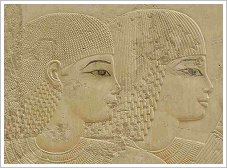
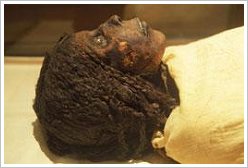
![]()
Hatshepsut's Fatal Flacon
(19/08/11)
It is 3500 years old. Actually it belonged to Queen Hatshepsut. For some time it is owned by the Egyptian Museum of Bonn University in Germany. The researchers there believed that the flacon contained perfume. Inside, they found dried up contents which were under examination at the Pharmaceuticaal Institute of the University for two years. Now it's definite: Ther was no perfume inside but balm to treat a skin complaint. Ingredients: a great quantity of palm oil, nutmeg oil, and: benzo(a)pyrene, one of the most carcinogenic substances!
Actually the researchers planned to recreate Hatshepsute's perfume. For sure they won't. It is known for a long time that Hatshepsut had cancer. This begs the question whether she poisoned herself
accidentally for years by using a carcinogenic balm to treat her skin complaint and as a result died of cancer.

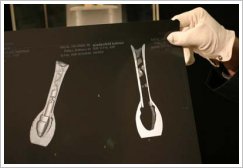
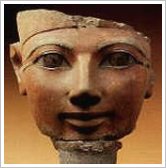
![]()
Up to 70 Per Cent of British Men Related to Tutankhamun?
(05/08/11)
In 2009, international scientists decoded the DNA of Tutankhamun and kept it secret. Then, in February 2010, Discovery
Channel aired a film in which the whole profile of Tut's Y chromosome was shown. After that a clever Swiss DNA genealogy centre reconstructed the DNA profiles of Tutankhamun, his father Akhenaten, and his grandfather Amenhotep III, and compared them with the DNA of Western European men. The result is strange: Up to 70 per cent of British men, half of all Western European men and Tutankhamun trace back to the same forefather who lived 9500 years ago by the Black Sea but among modern-day Egyptians, less than 1 per cent!
The centre contends that it searches for the closest living relatives of "King Tut" and offers you a DNA testing at the price of 129 resp. 399 EUR. (On condition that you are a man as it's not possible to find relatives by X chromosome for more than 3 generations.) And in case you are not related to the pharaoh: Don't worry. Maybe to Genghis Khan or Marie Antoinette or Che Guevara. For that there are tests, too...
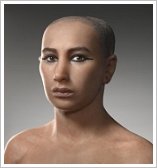
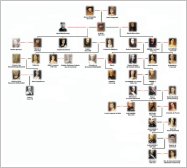

![]()
MET Returns 19 Artifacts from Tutankhamun's Tomb, Cairo
(01/08/11)
The Metropolitan Museum of Art (MET) in New
York already decided one year ago to return 19 small-scaled artifacts from Tutankhamun's treasury to Egypt. They were formerly in the private collections of archaeologist Howard Carter, who discovered the tomb and Lord Carnarvon, who sponsored the excavation. The objects have been noted in the tomb records, but didn't appear in any
excavation photographs. Now, these objects, which were never meant to have left Egypt, are back and will be displayed in the Egyptian Museum in Cairo.
